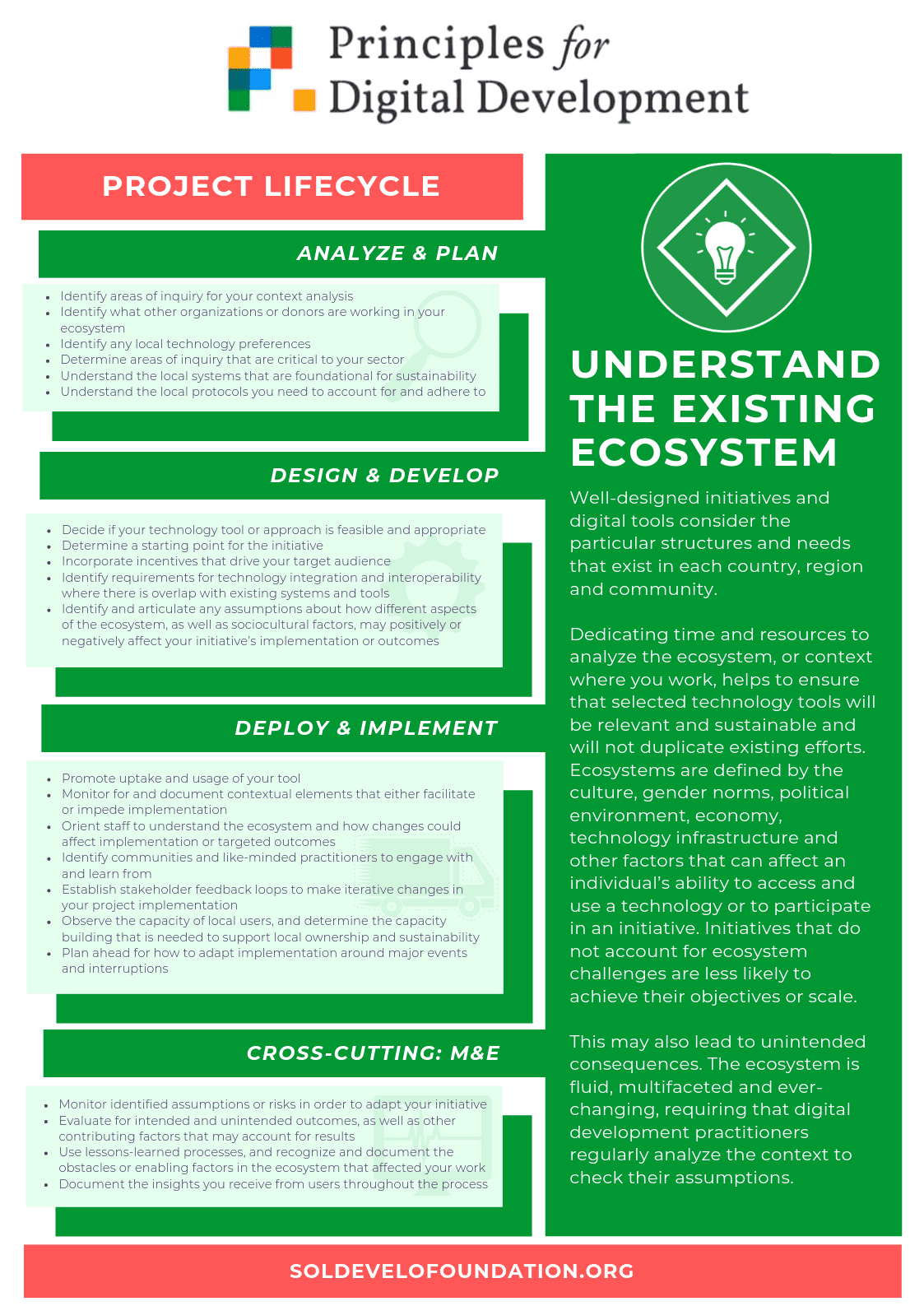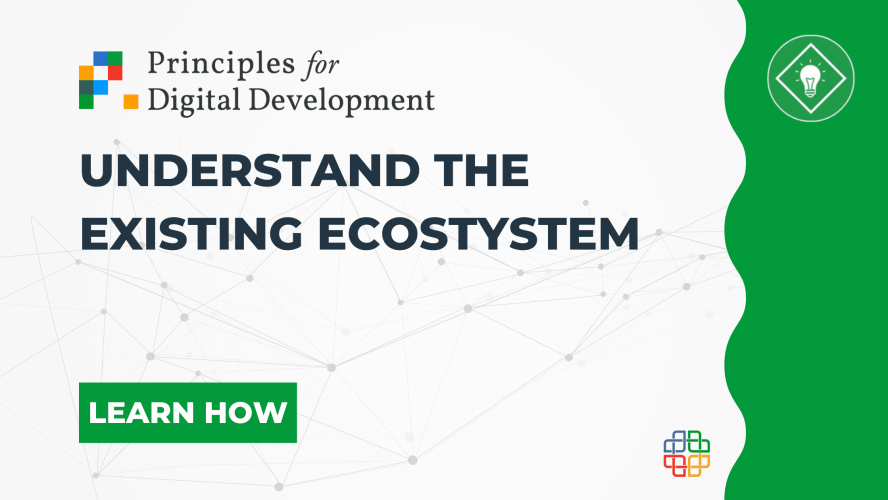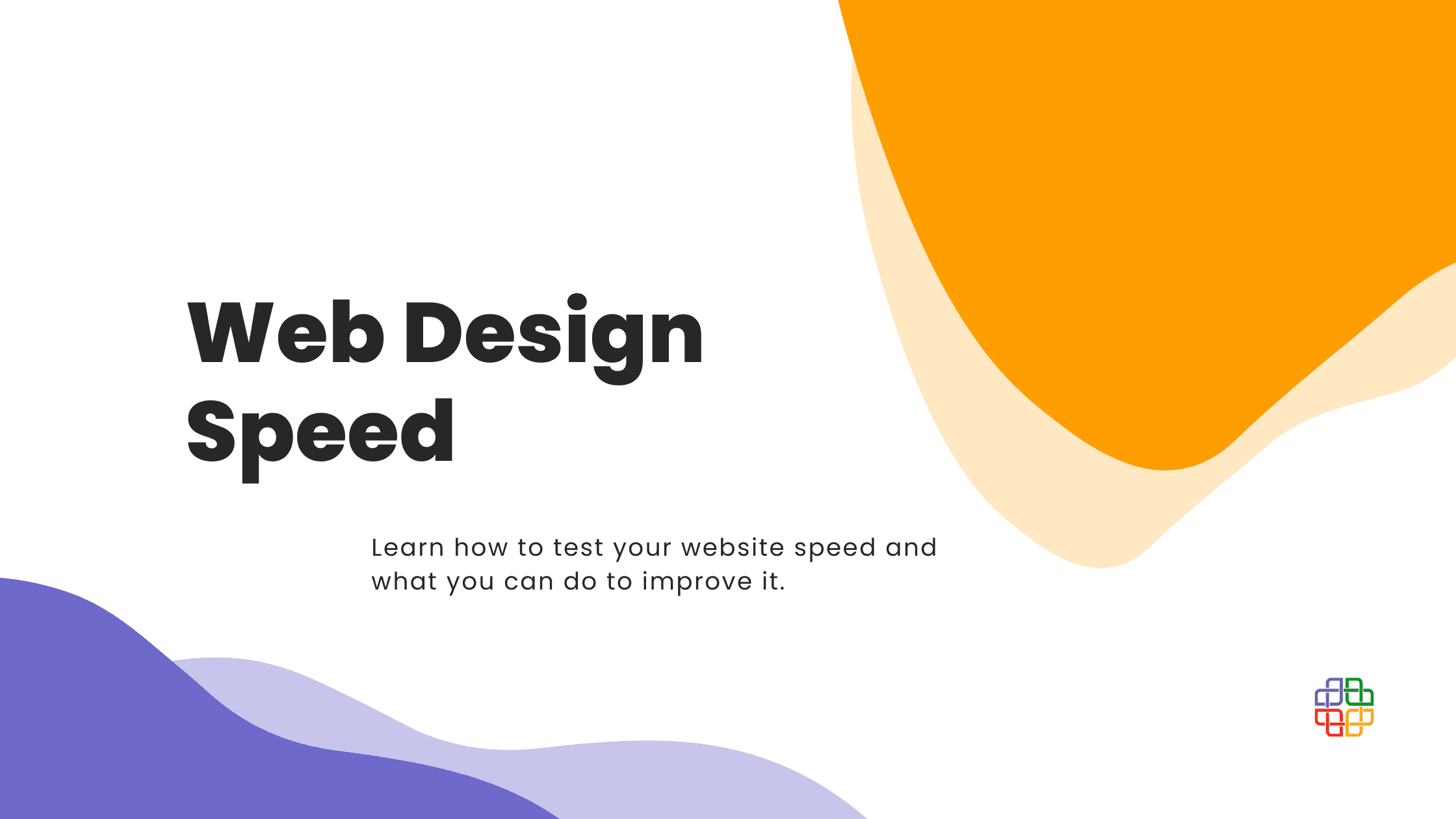Another Principle for Digital Development we want to transform for the needs of the non-profit organizations is the understanding the existing ecosystem. It’s one of the most universal rules, that should be used by anyone in any institution. You have to know your surroundings when you want to work in a specific environment. Understanding the ecosystem can improve your project immensely. Below you can find some tips and tricks of how you should do this in a most efficient way.
Understand the ecosystem around your project
If you want to plan out your project to bring the best possible results, always take into consideration the ecosystem you are going to work in. Culture, gender norms, political environment, economy, technology infrastructure. All of this and many other factors can change drastically how your target audience will react to your initiative. If you ignore the ecosystem during the planning stage of the project, you will have to face many unknown consequences of your work. Or the community you want to help can even outright reject your solutions. Analyze the project environment and plan with it, not against it.
- Engage with your target audience and consult existing research to develop an understanding of the people, networks, cultures, politics, infrastructure and markets that make up your ecosystem before designing your initiative.
- Coordinate with other organizations from the area, as well as the local government early on to learn from successful and unsuccessful initiatives in the ecosystem, to avoid duplicating efforts and repeating old mistakes of others.
- Ensure that your initiative aligns with existing projects.
- Involve community members, donors, local and national governments, and other organizations throughout the project lifecycle.
- Monitor the ecosystem for changes throughout the project lifecycle, and adapt your initiative as needed.
Your project should take into account the understanding of the existing ecosystem on every step of the work.
Analyze & Plan
Before you start your project, you should be sure, that you know everything about the ecosystem. First of all, you should gather as much information in these areas:
- People targeted by your project, including women, children and people with disabilities
- Community, culture and socio-economic context in which your target audience lives
- Market and technology environment, including regulatory considerations
- Political landscape, policies and regulations
- Active donors, implementers and digital development initiatives in the implementation area.
This should build you a pretty compressive vision of the ecosystem you will work on with your project. Designing the project is time-consuming. But good research can help you be sure, that your idea can work in the real-life environment. If you forget about, for example, that local regulations can stop some of the elements of your idea, this could potentially even stop your whole projects. “Better be safe than sorry”. And to be safe, you have to do your research first.
Also. you should map out all the similar initiatives to yours, that happened in the region you want to work in. Thanks to this you will know if you should start something from a scratch or build upon earlier successes. Don’t only read about them, but also study their reports. See what went wrong and how you can improve their work.
Design & Develop
When you’ll gather all the needed information, it’s time to start designing your project. Thanks to knowing the ecosystem you will work on, you can decide what approach will be best for this specific audience. Use the same culture that they are part of. Your project will have a better chance to be adopted by them. For example, if you want to target young people – talk in their language and be sure, that all of the element appeal to them. Maybe your project wants to work for older communities. It’s a good idea to use a larger font to make it more accessible for them in this case.
This knowledge will help you also choose the best incentives for them. You have to know what motivates them. Through this, you will find an easier way to make them participate.
Deploy & Implement
Remember that every ecosystem is constantly changing, along with people inside of him. Your project should be flexible enough, so it can adapt to the new realities it will face along the way. Look closely at the environment during your work. You can be ahead of new changes and act accordingly to them. Monitor your surroundings constantly. Work out the best way to get feedback from the ecosystem. You can use it to improve or even change your project.
During the implementation stage, be sure that you promote your project the best way you can. Thanks for knowing them through research, you will know how to market to them. Project that can find its audience has a much better chance to succeed.
Monitor & Evaluate
After the project, it is always a good practice checking on your assumptions from the research and planning. Which elements had the biggest impact? What parts of the ecosystem were the most important during the project? Answering these question could help you enormously in preparing for the continuation of this project or during the preparation of the new ideas.
Remember to document everything in the special report, available to others in your organization. And if it possible: also to the public. Sharing lessons not only helps others. But it also creates a better understanding of a specific environment. Data is incredibly useful in nowadays, so you also should add to the good practice of sharing it with others. Also, ask for feedback from your target audience. Guarantee the voice from the real-life participants and not only from the creators of the project.
The Lifecycle of “Understand the Existing Ecosystem”

To help you apply the “Understand the Existing Ecosystem” Principle in your digital projects, the creators of the initiative provide a guide. You can find it here.
Continue your journey with the Digital Principles and read about the 3rd one – “Design for Scale“:
Design for Scale | Principles for Digital Development
Learn to use Digital Principles in practice:
Digital Principles Organizational Self-Assessment
Digital Principles Indicator Library
Digital Principle-Focused Evaluation
The Principles For Digital Development: Gold Practices




